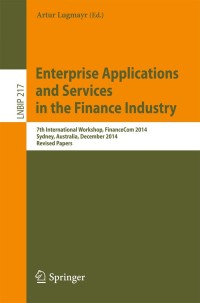Question
Planning for Multiple Goals Samantha is a 36-year-old single mother to a five-year-old girl, Eve. Samantha is currently renting a condominium in British Columbia and
Planning for Multiple Goals
Samantha is a 36-year-old single mother to a five-year-old girl, Eve. Samantha is currently renting a condominium in British Columbia and would like to buy a house worth $400,000 in five years using an $80,000 down payment. She would also like to accumulate sufcient funds to pay for four years of secondary education for Eve, at an expected cost of $15,000 (in todays dollars) at the start of each year over four years starting in 12 years. Finally, she plans to retire at age 65, at which time she plans to begin collecting her government and employment pensions which will meet her annual gross income retirement needs of $60,000 (in todays dollars).
Samantha earns a gross annual salary of $100,000 working in the head office of a financial institution. In addition to the government source deductions she pays, she also pays $200 per month in employment source deductions for her group insurance plan.
Samantha has the following investment assets:
- $5,000 in her chequing account to cover her monthly expenses.
- $8,000 cash in a savings account that earns 0.05% per year.
- $30,000 cash in her Tax-Free Savings Account (TFSA) that earns 1.00% per year.
Samanthas car that is valued at $10,000 has an outstanding car loan secured against it with a balance owing of $8,000 at an interest rate of 7% (compounded monthly). She currently pays $240 per month towards the loan. She also has access to an unsecured line of credit that charges interest at 5% (compounded monthly). She has not borrowed any of the $30,000 credit limit that is available to her. Noreen also has a credit card with a limit of $10,000 and an interest rate of 20% (compounded monthly), however she pays it off every month so she has no balance currently owing.
Samanthas monthly housing expenses include $2,000 in rent, $300 for her condominium fee, $100 each for heat, electricity and water, and $50 for renters insurance. Her monthly transportation costs include $100 each for insurance, maintenance and gas, as well as $120 for her transit pass. Samantha and Eves lifestyle expenses include $800 for food, $70 for a cell phone, $150 for TV, cable and a home phone, $200 per month on entertainment (mostly on events that she and Eve attend together), and $400 for Eves extra-curricular activities, including swimming lessons and dance classes.
Questions
- Identify and write down Samanthas goals.
- Prepare a net worth statement for Samantha.
- Prepare a monthly cash flow statement for Samantha.
- How much free cash flow does Samantha have each month?
- Does Noreen have a cash surplus or deficit?
- How large should Samanthas emergency reserves be based on her monthly expenses? Does she have sufficient emergency reserves to cover her in the event of an emergency?
- What recommendation could you make to help Samantha improve her financial situation? How would your recommendation affect her net worth and free cash flow?
- What should Samantha do with her free cash flow?
Step by Step Solution
There are 3 Steps involved in it
Step: 1

Get Instant Access to Expert-Tailored Solutions
See step-by-step solutions with expert insights and AI powered tools for academic success
Step: 2

Step: 3

Ace Your Homework with AI
Get the answers you need in no time with our AI-driven, step-by-step assistance
Get Started


